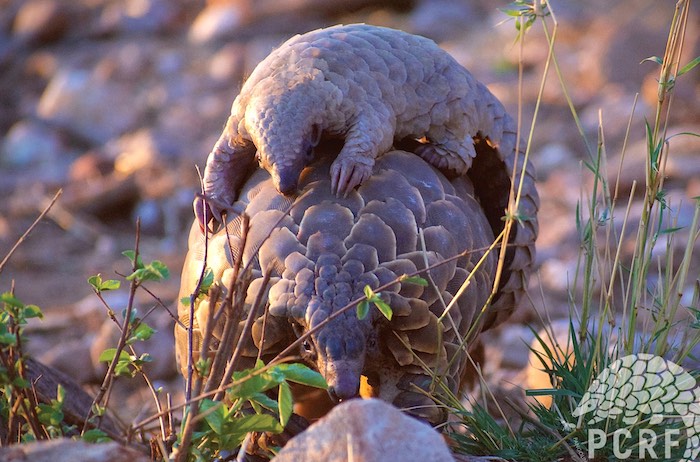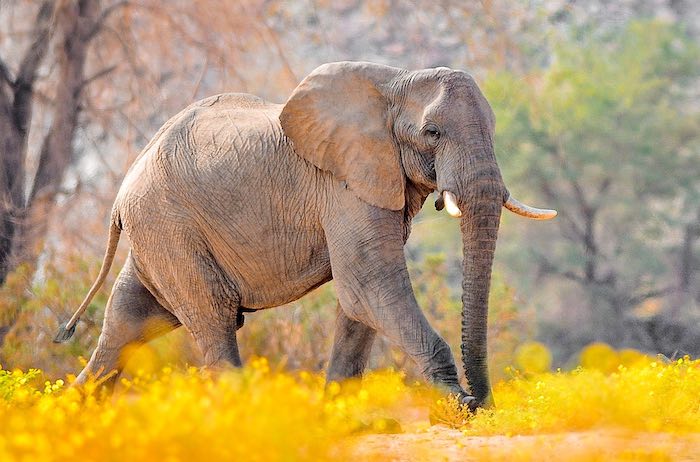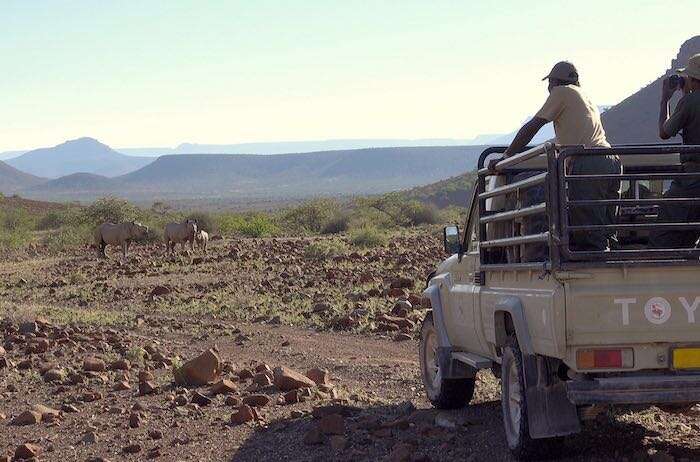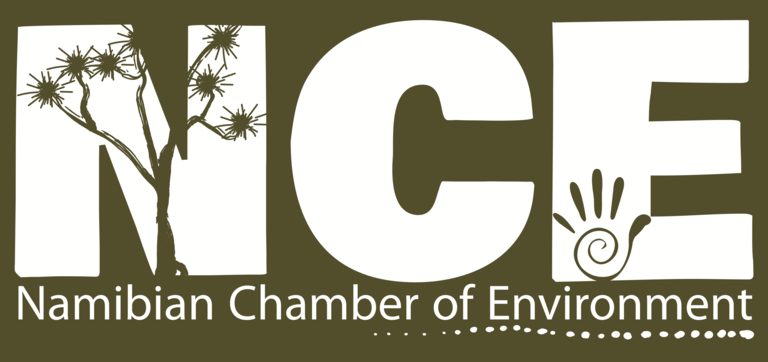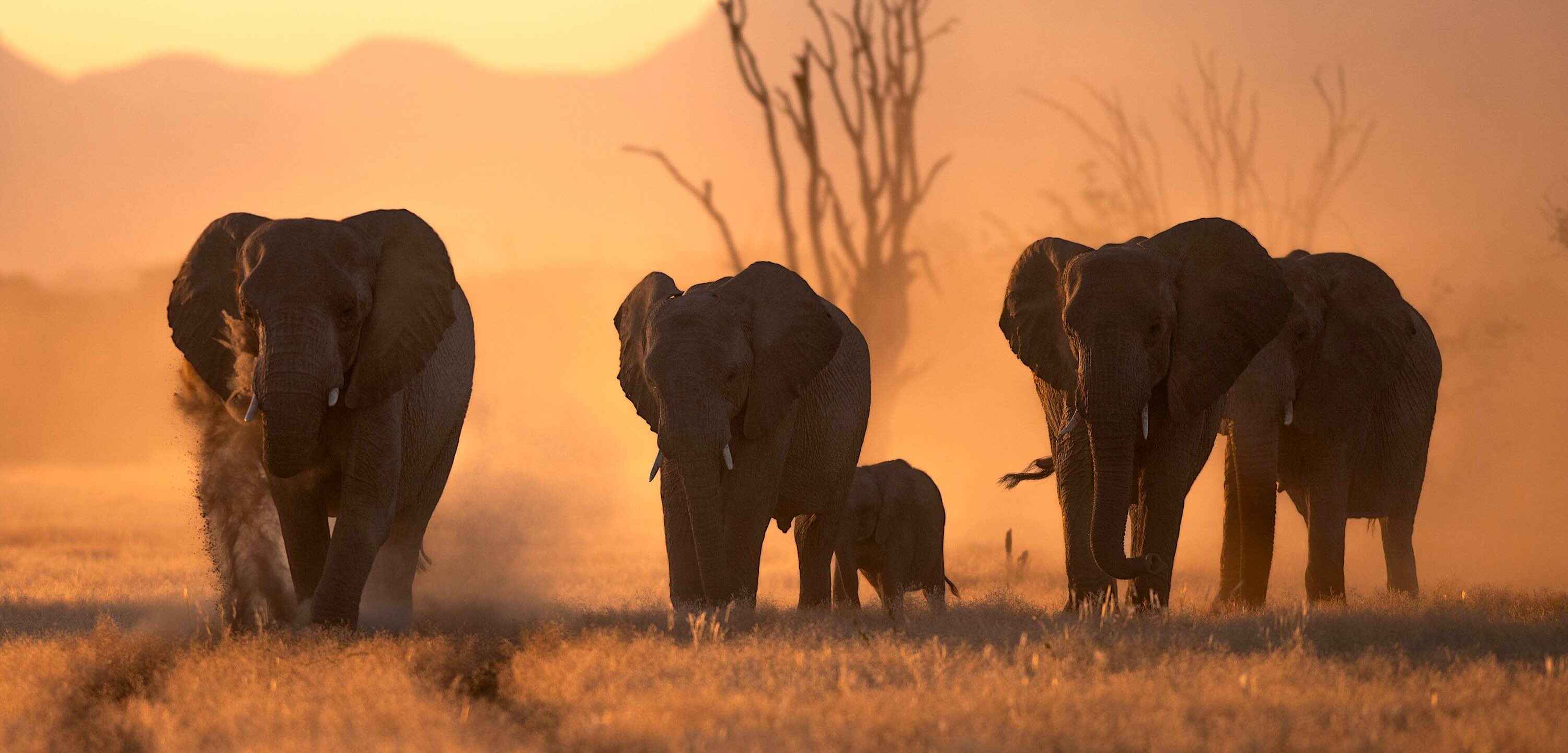
Guarding people and their elephants
How Community Elephant Guards are working towards coexistence
14th November 2025
14th November 2025
Since 2003, Elephant-Human Relations Aid (EHRA) has been dedicated to implementing holistic solutions for human-elephant conflicts in Namibia's northwest. We assess the diverse ways that free-roaming elephants negatively impact people's lives and livelihoods, and trial and apply effective measures to foster peaceful coexistence. The ultimate aim is to safeguard elephant survival beyond national park boundaries by employing strategies centred on harmonious living and habitat protection.
EHRA launched the Elephant Guard Programme in 2019 as a boots-on-the-ground extension of its longstanding conflict prevention work, providing regular outreach, safety education, and rapid response to communities experiencing human-elephant conflict human-elephant conflict. The Community Elephant Guards are local people – respected members of their villages and conservancies – carefully chosen by traditional leaders or conservancy committees. This ensures deep trust and cultural alignment. Before taking on their vital roles, each Guard undergoes a long and rigorous training programme, which they must pass to be certified. This training equips them with the knowledge, skills, and confidence to respond effectively to complex situations involving elephants.
Although the programme paused during COVID-19 due to funding constraints, it was revived in 2022 and is now active in Sorris Sorris Conservancy, the greater Omatjete area, and around Fransfontein town. Five trained Community Elephant Guards work around the clock in these elephant conflict hotspots – including one outstanding female Guard who is breaking barriers and inspiring other women.
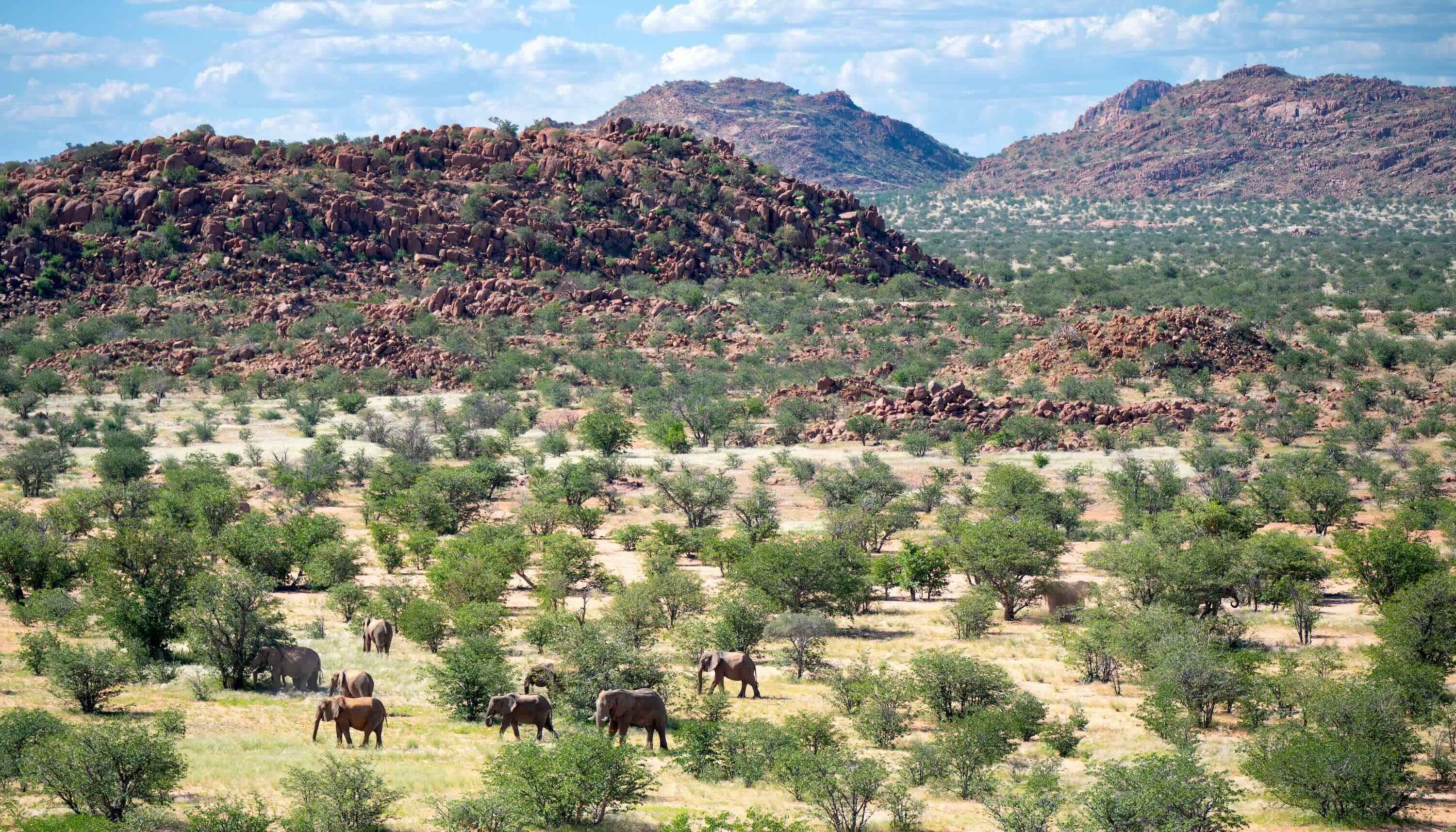
Human-elephant conflict is one of the main drivers of elephant population decline in northwest Namibia, and at the heart of this conflict lies fear and misunderstanding. EHRA's educational PEACE Project (People and Elephants Amicably Co-Existing), launched in 2009, laid the foundation by training thousands of community members on how to safely interact with elephants and prevent conflict. The Elephant Guards now continue that legacy, becoming the trusted experts in their communities – first responders during emergencies, elephant educators, and compassionate listeners.
What is truly remarkable is how motivated these local communities are to take ownership of the situation themselves. Rather than outside actors stepping in, it is their own neighbours – people who share their daily lives and challenges – leading the way. This local leadership is transforming fear into agency, inspiring pride and proactive problem-solving.
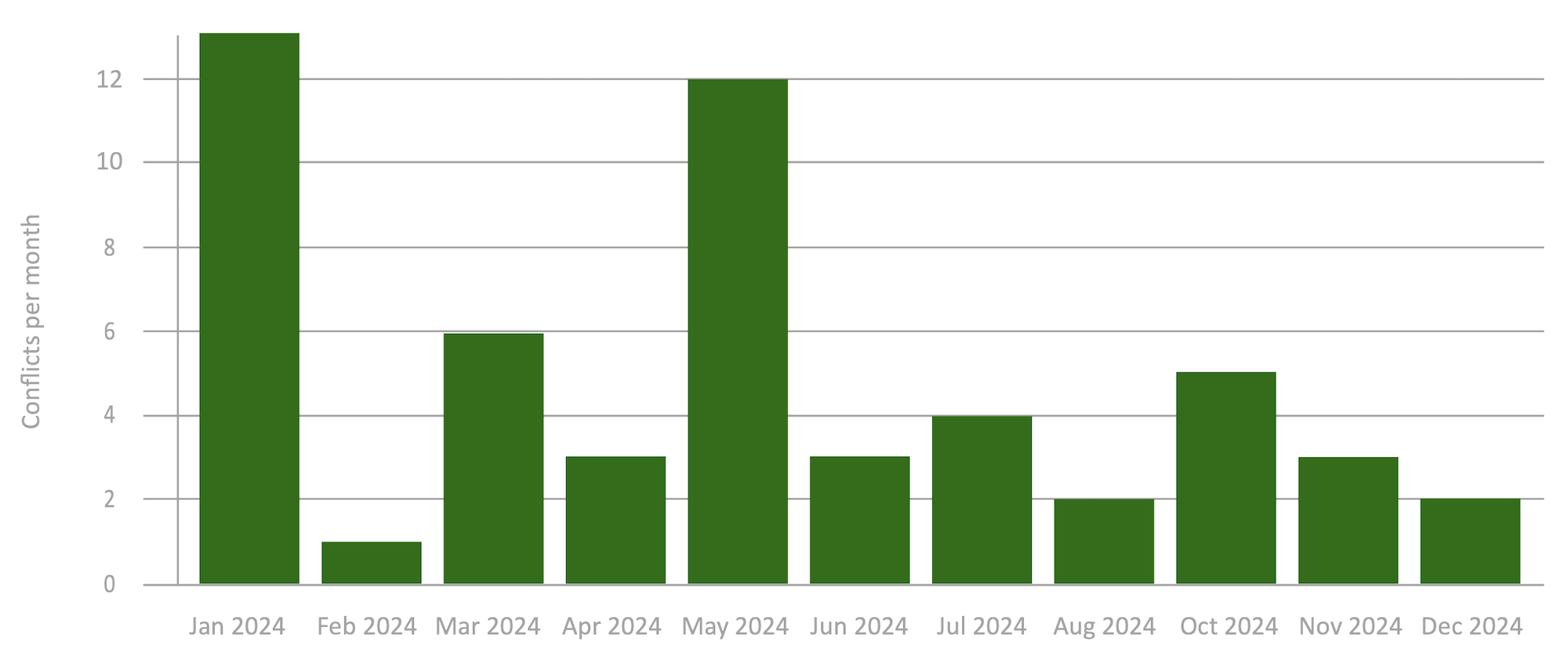
The Elephant Guards' daily work is as diverse as it is vital. One of their most important roles is providing live updates on collared elephant movements – a sort of elephant weather app
that helps communities prepare for a visit. This real-time information, paired with in-person outreach, helps shift fear into empowerment.
When conflict occurs, the Guards are often the first to respond – day or night. They assess the damage, help with repairs, and offer immediate support. Equally important, they investigate the cause and recommend practical solutions, often using materials and knowledge already available within the community.
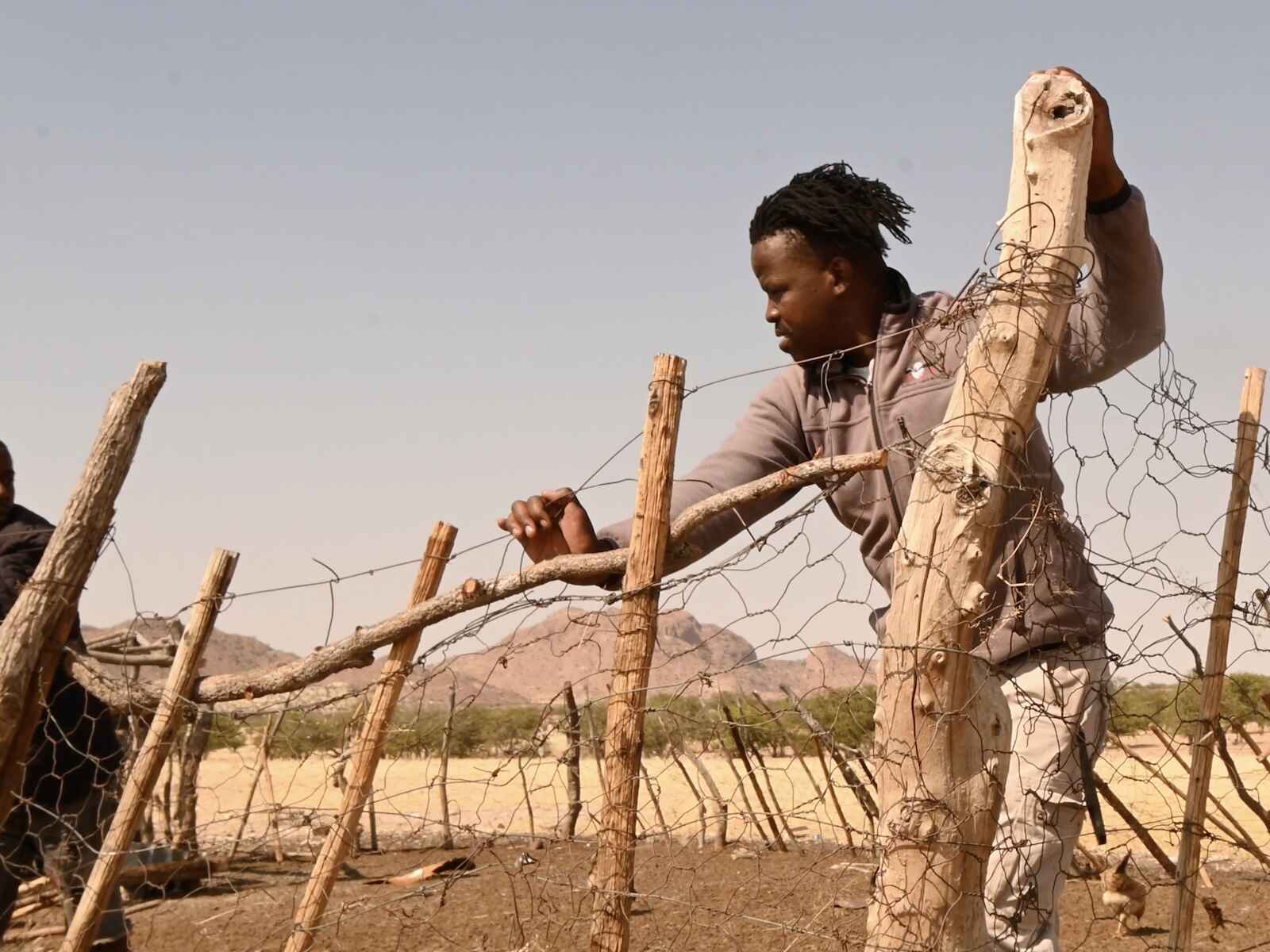

The numbers reflect their dedication. In the past year, Elephant Guards spent:
- 29.5% of their time on community outreach and training
- 20.6% responding to conflict and conducting repairs
- 16.6% attending community meetings to build trust
- 6.6% supporting Eco Clubs at schools
- 5.6% guarding homesteads and funerals during elephant activity
The remaining time was spent coordinating logistics, reporting data, and following up on prior incidents – work that often goes unseen but is essential to the programme's success.
The results are tangible. As one villager, Mr. Sarob from Farm Arbeid, recalled: I was walking with two friends when we bumped into elephants. They wanted to run, but I remembered what Taiwin [our Elephant Guard] had taught us – not to run, since there might be more elephants nearby. So, we climbed a hill instead. From there, we saw we were surrounded. That knowledge may have saved our lives.
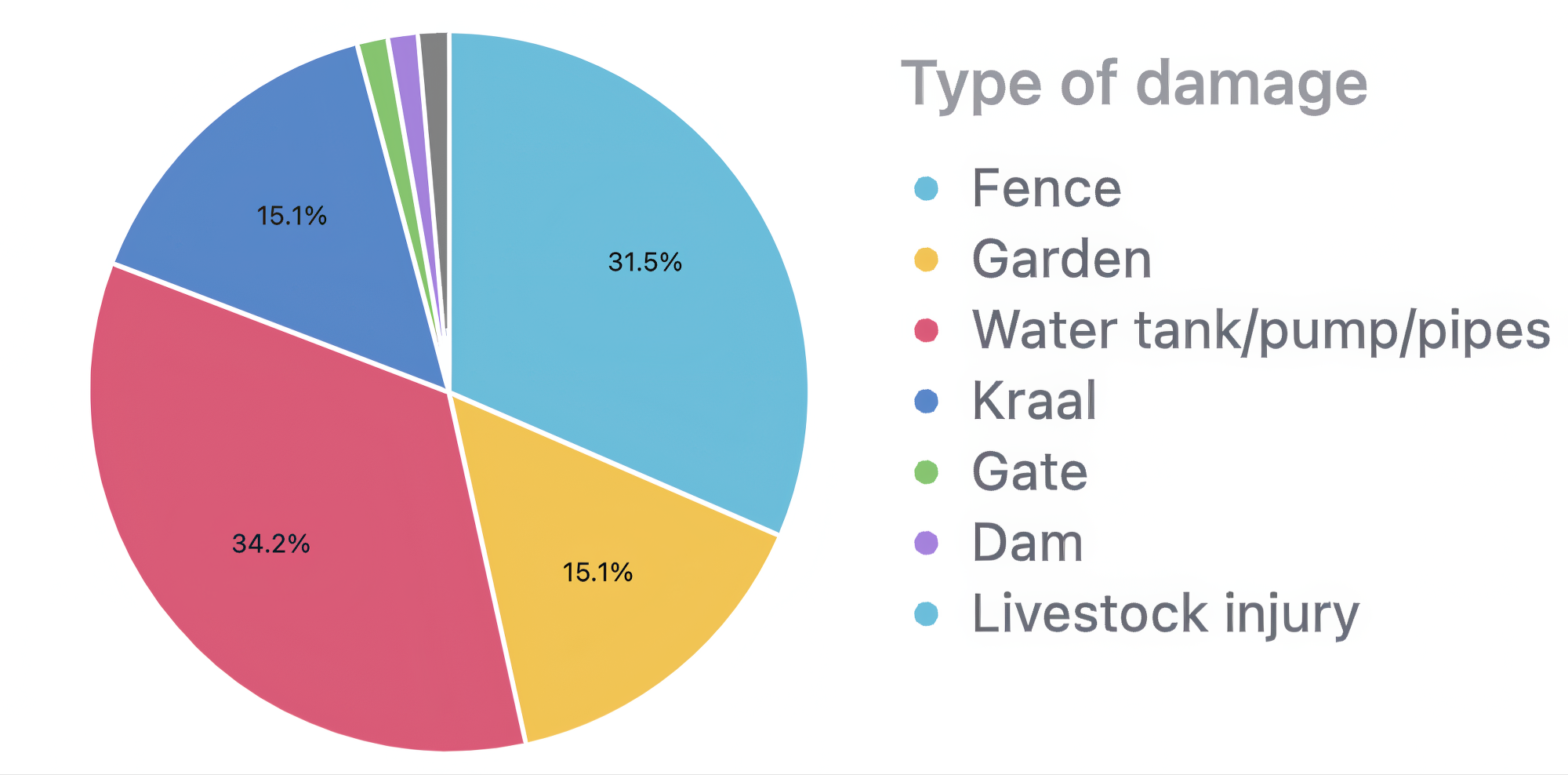
The Guards are often called in the middle of the night when elephants approach villages. Residents are scared – sometimes too scared to implement what they've been taught. In these moments, Guards like Taiwin, the Head Guard for the western region, calmly stay on the phone, guiding people step by step through how to safely move elephants away from homesteads.
Perhaps most empowering is how the Guards help communities find low-cost, high-impact solutions using what they already have. One popular tactic involves the use of honey bee sounds, which elephants naturally avoid. While real beehive fences aren't always feasible in this dry part of the country, villagers now download the buzzing of angry bees from YouTube and play them through phones, speakers, or even televisions when elephants approach.
They know elephants are smart,
says Taiwin. So they download several different versions to keep them guessing. And it works!
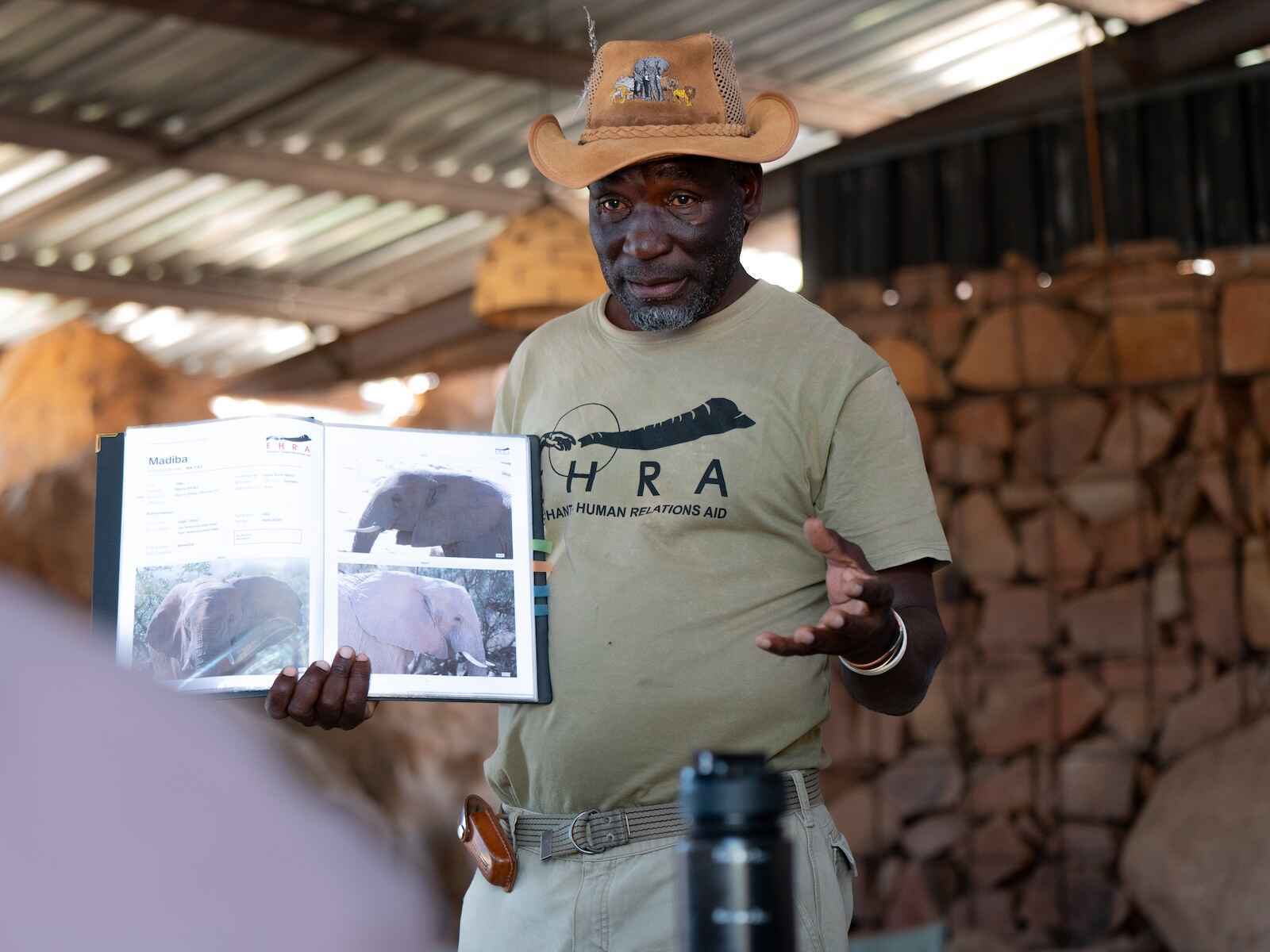
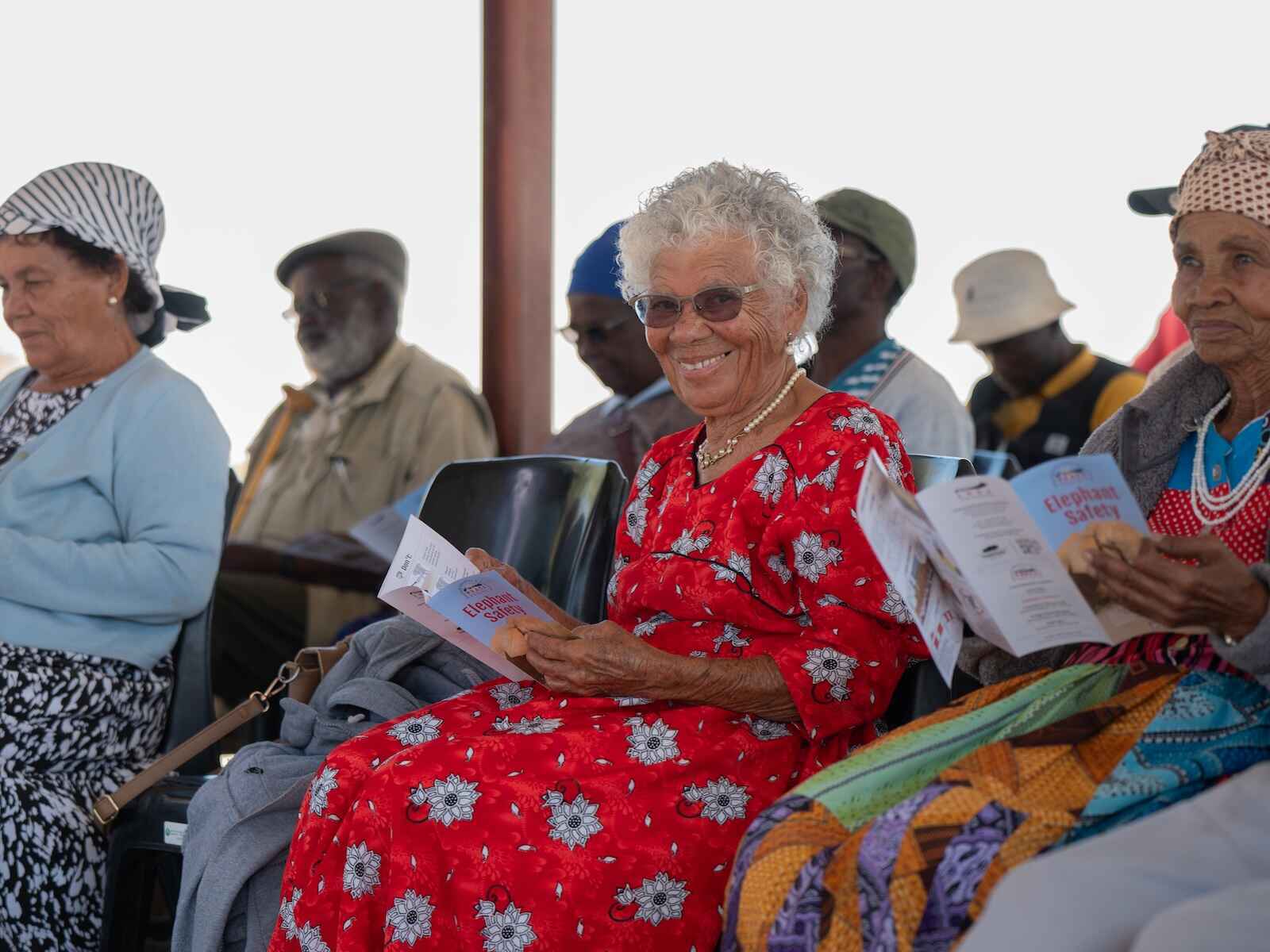
Thanks to the Elephant Guards, many families who once lived in constant fear now feel secure and confident. With protected water tanks, solar pumps replacing diesel, gardens surrounded by electrified fencing, and a growing toolbox of conflict mitigation strategies, attitudes are shifting. People are not only more accepting of elephants – they're starting to feel proud of them.
I used to be terrified of elephants. I didn't want them. Now, I feel safe and I understand. I can enjoy the elephants now,
says Geraldine from Farm Irene. And when my grandchildren visit, I show them the elephants. I'm proud they are here.
In a world where coexistence often feels like a dream, EHRA's Elephant Guards are proving that with the right knowledge, local leadership, and compassion, it's a reality worth working for.
Their passion, creativity, and commitment are what make this programme truly special,
reflects Christin Winter, EHRA's Conservation Programme Manager. This small team dreams big – and they are making that dream work.

For articles on similar topics, please click one of the following options:
If you enjoyed this page, then you might also like:
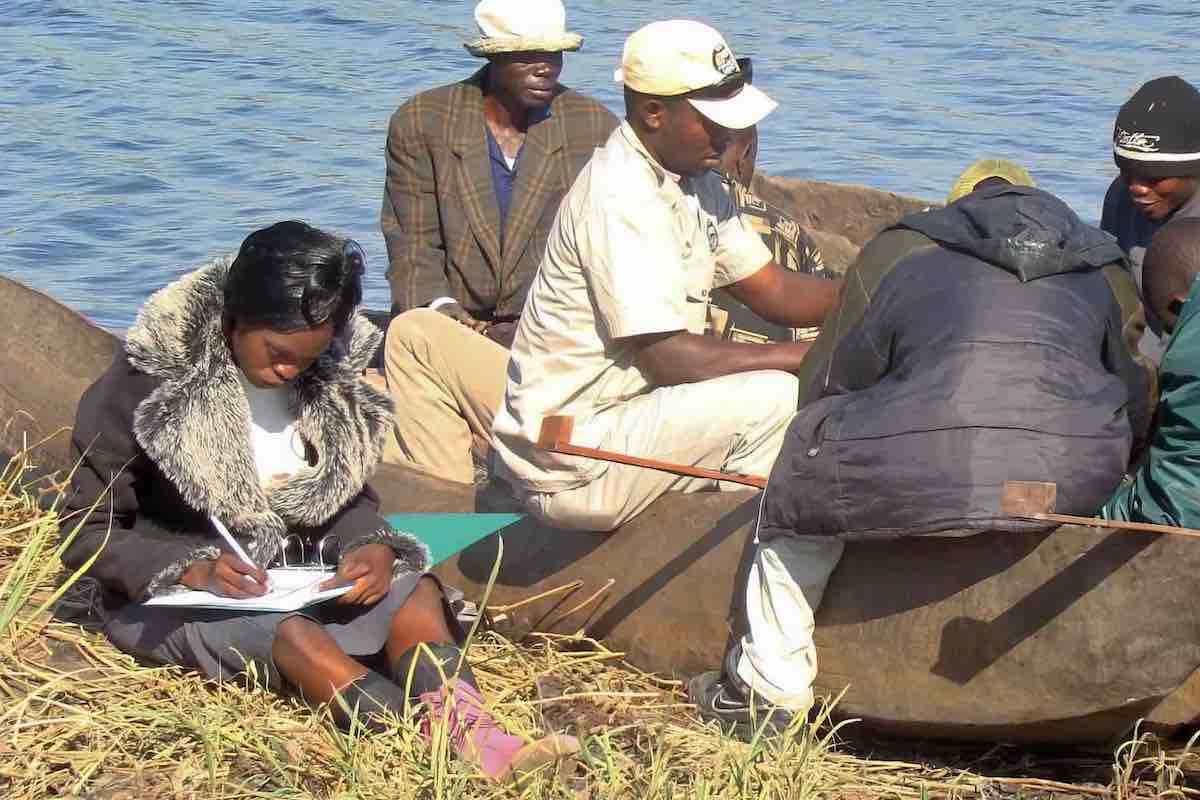
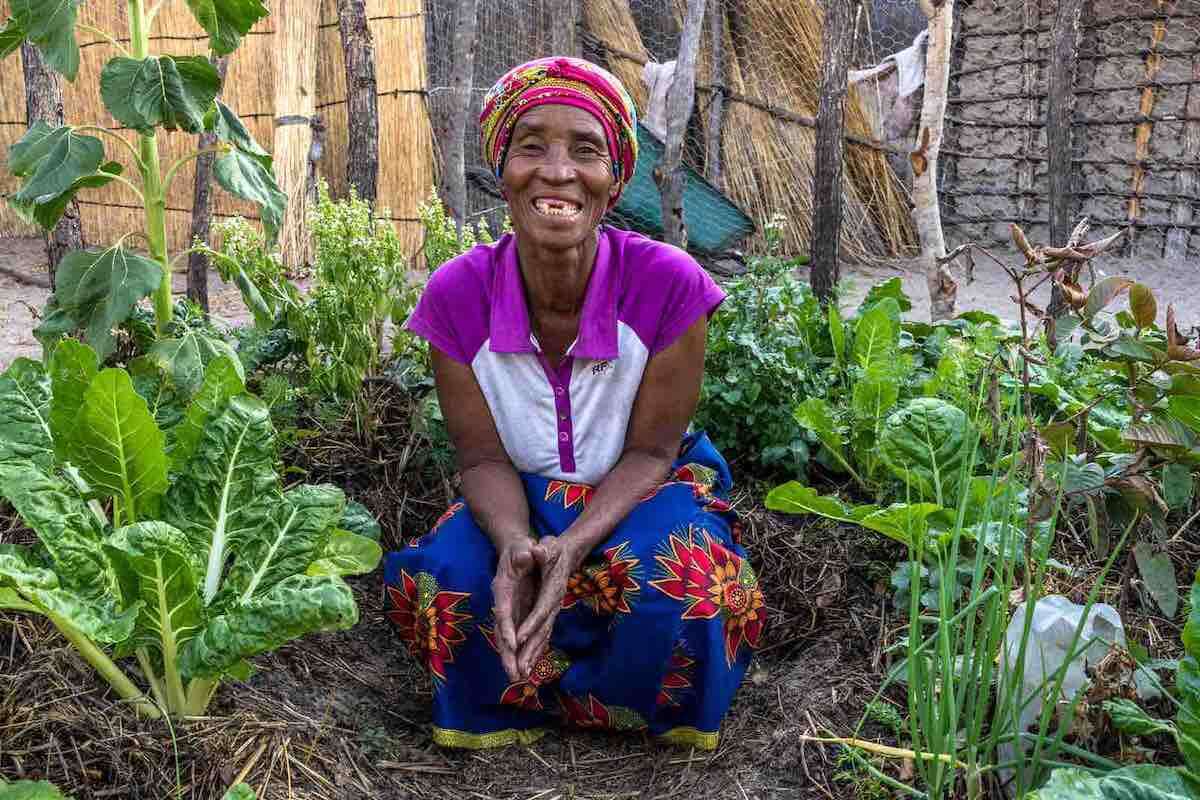

For more great articles from Conservation Namibia see below...
Conservation Namibia brought to you by:
We use cookies to monitor site usage and to help improve it. See our Privacy Policy for details. By continuing to use the site, you acknowledge acceptance of our policy.



